Yamuna Revival in Delhi: Cleaning Technology & Methods
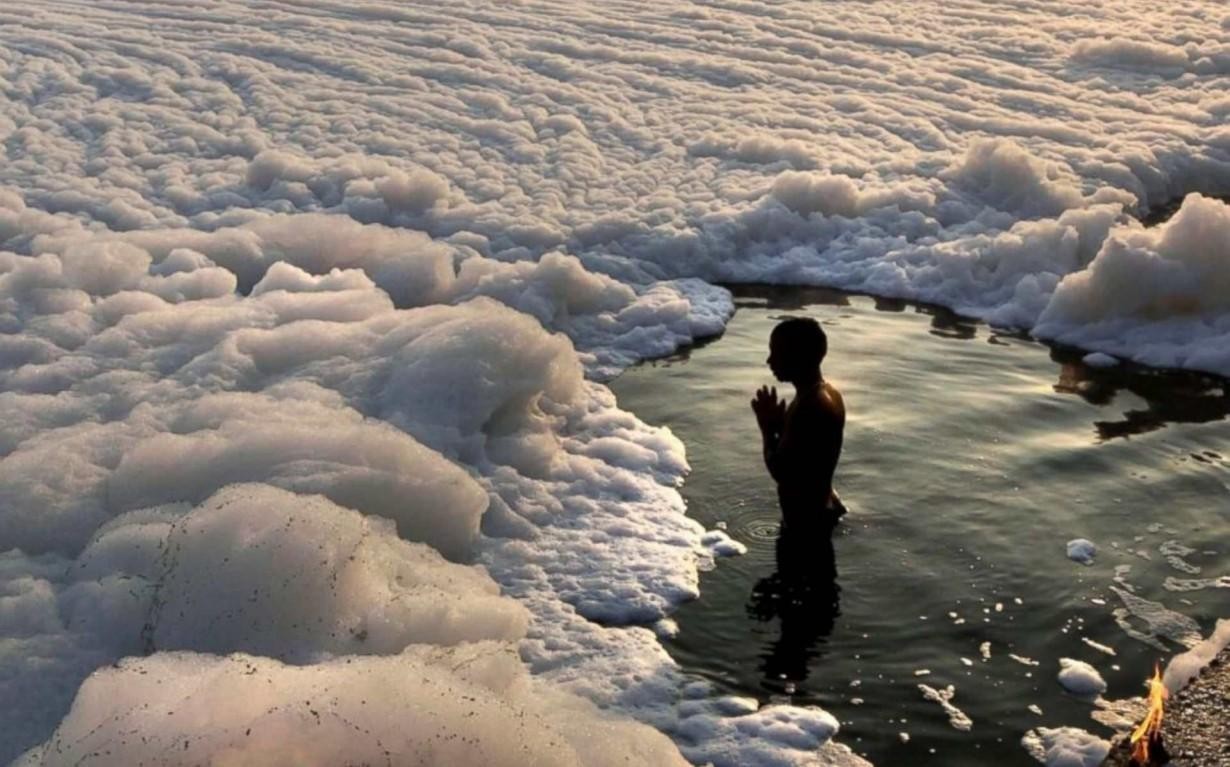
As far as sanctity is concerned, the River Yamuna is more directly connected with Lord Krishna than the Ganges. The Lord sanctified the River Yamuna from the beginning of His transcendental pastimes in the world. While His father Vasudeva was crossing the Yamuna with the baby Lord Krishna for a safe place at Gokula on the other bank of the river from Mathura, the Lord fell down in the river, and by the dust of His lotus feet the river at once became sanctified.
Context:
- Days ahead of the formation of the Bharatiya Janata Party (BJP) government in Delhi, a large-scale effort to clean the heavily polluted River Yamuna commenced on Sunday February 16,2025.
- The initiative, guided by a four-pronged strategy, aims to restore the river within three years.
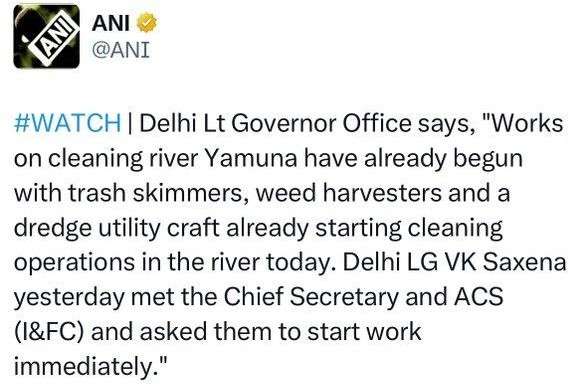
1.
What is the origin of Yamuna river?
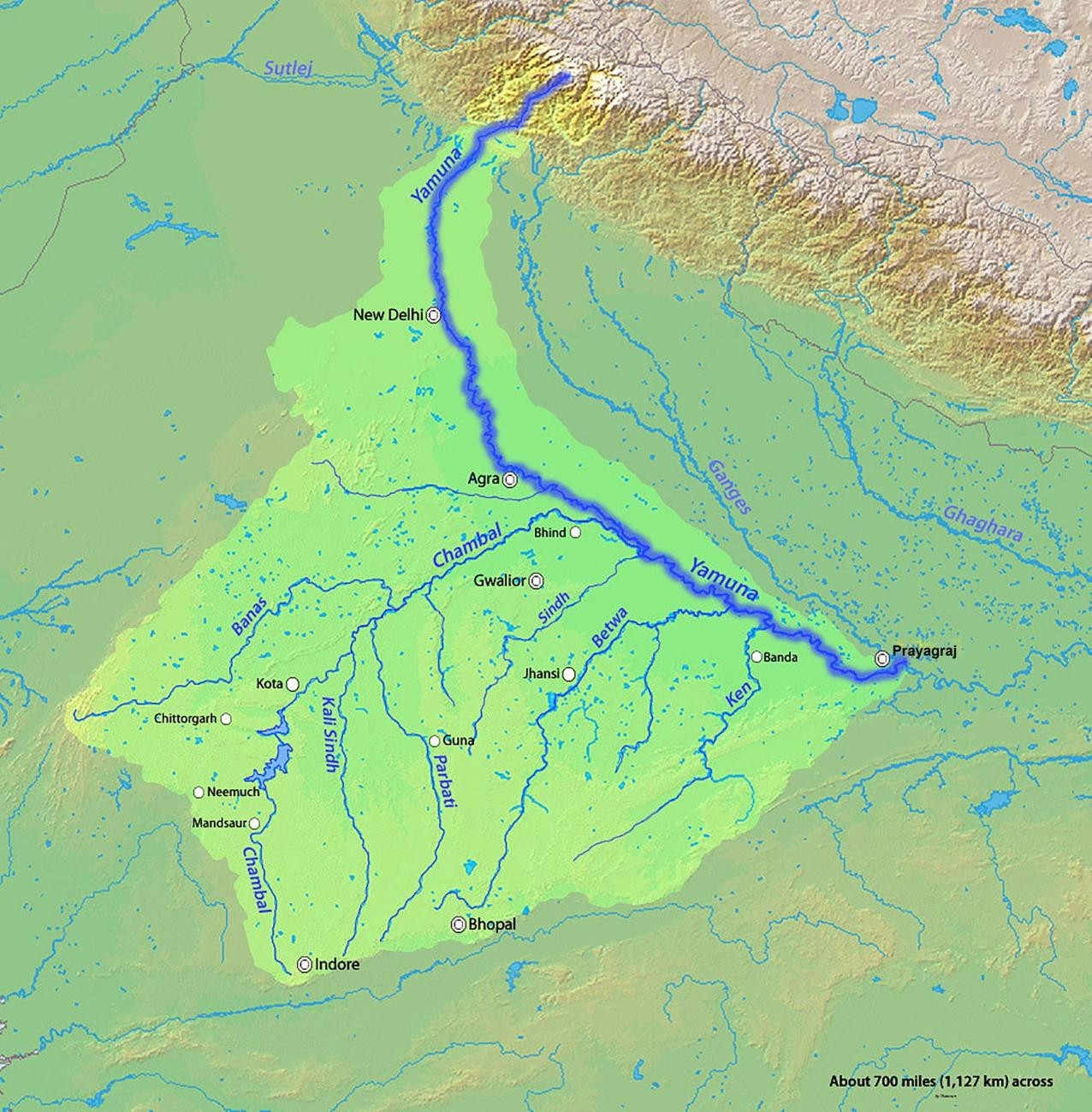
- The Yamuna River originates from the Yamunotri Glacier near Bandarpoonch Peak in the Mussoorie range of the Lower Himalayas.
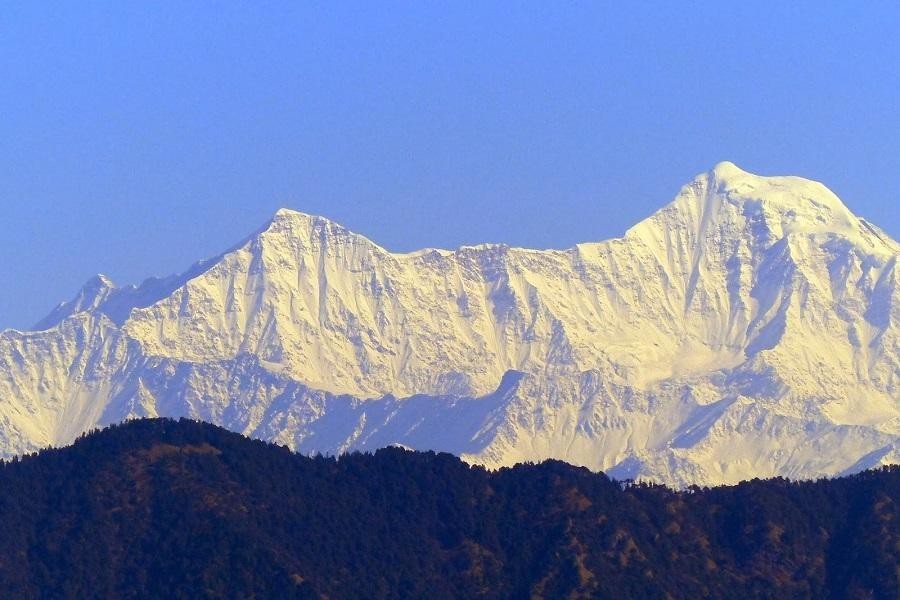
- This glacier is situated at an altitude of approximately 6,387 meters in the Uttarkashi district of Uttarakhand, India.
- The Yamuna River begins its journey from this glacier, marking the source of one of India’s most significant rivers.
- The Yamuna River flows along states of Uttarakhand, Himachal Pradesh, and Haryana and enters Delhi and merges with the Ganga near Triveni Sangam, Prayagraj.
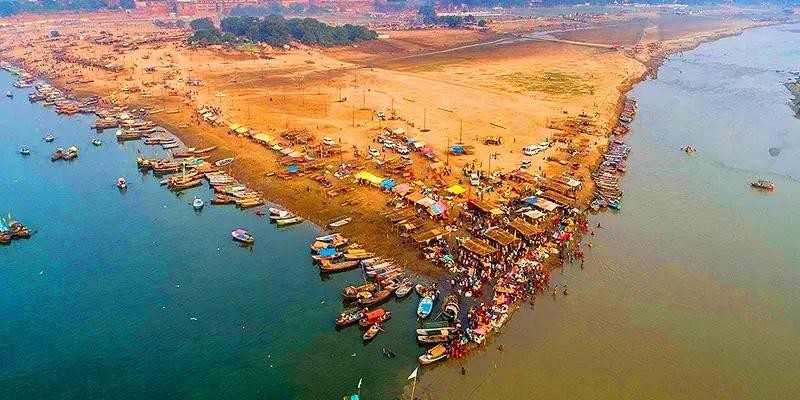
2.
What is the Significance of River Yamuna?
"The Yamuna is not just a river; it's a lifeline weaving through the fabric of Indian civilization."
| Significance | Analysis |
|---|---|
| Religious Significance |

|
| Socioeconomic Significance |
|
| Tourism |
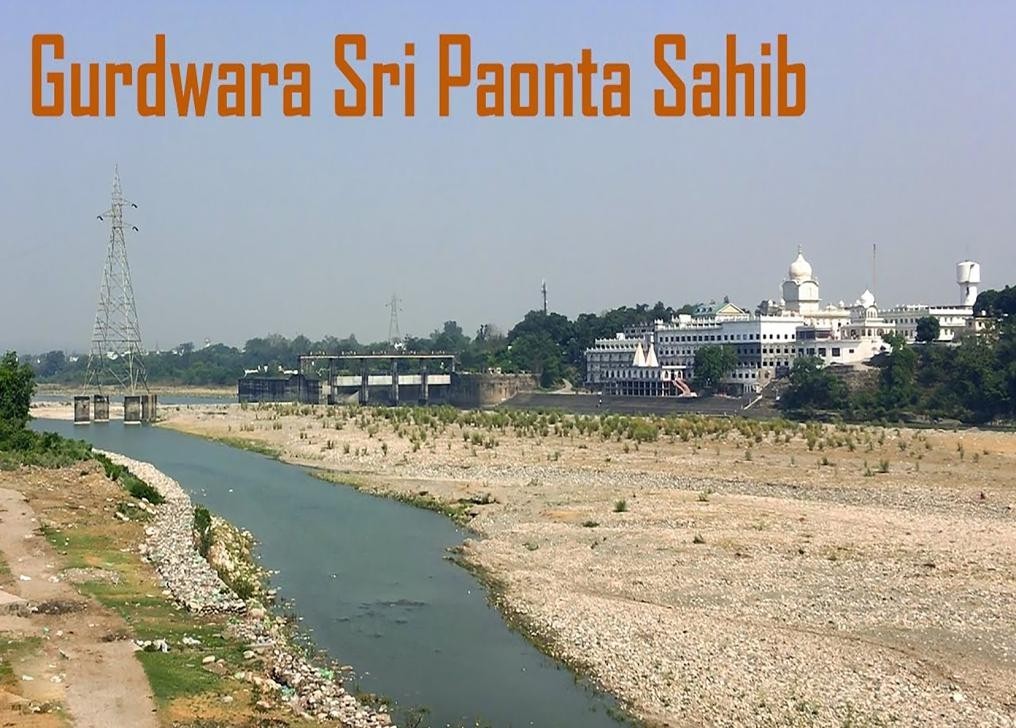 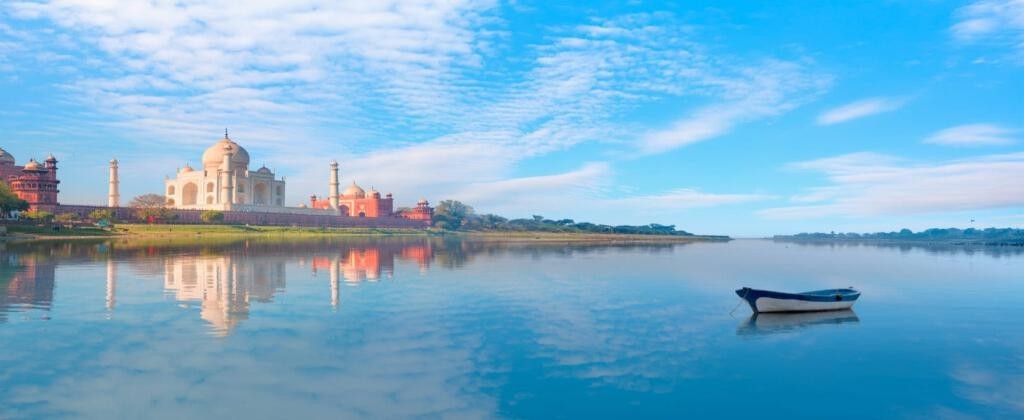  |
4.
What are various segments of the Yamuna River?
Diagrammatic presentation of the segments of the Yamuna River
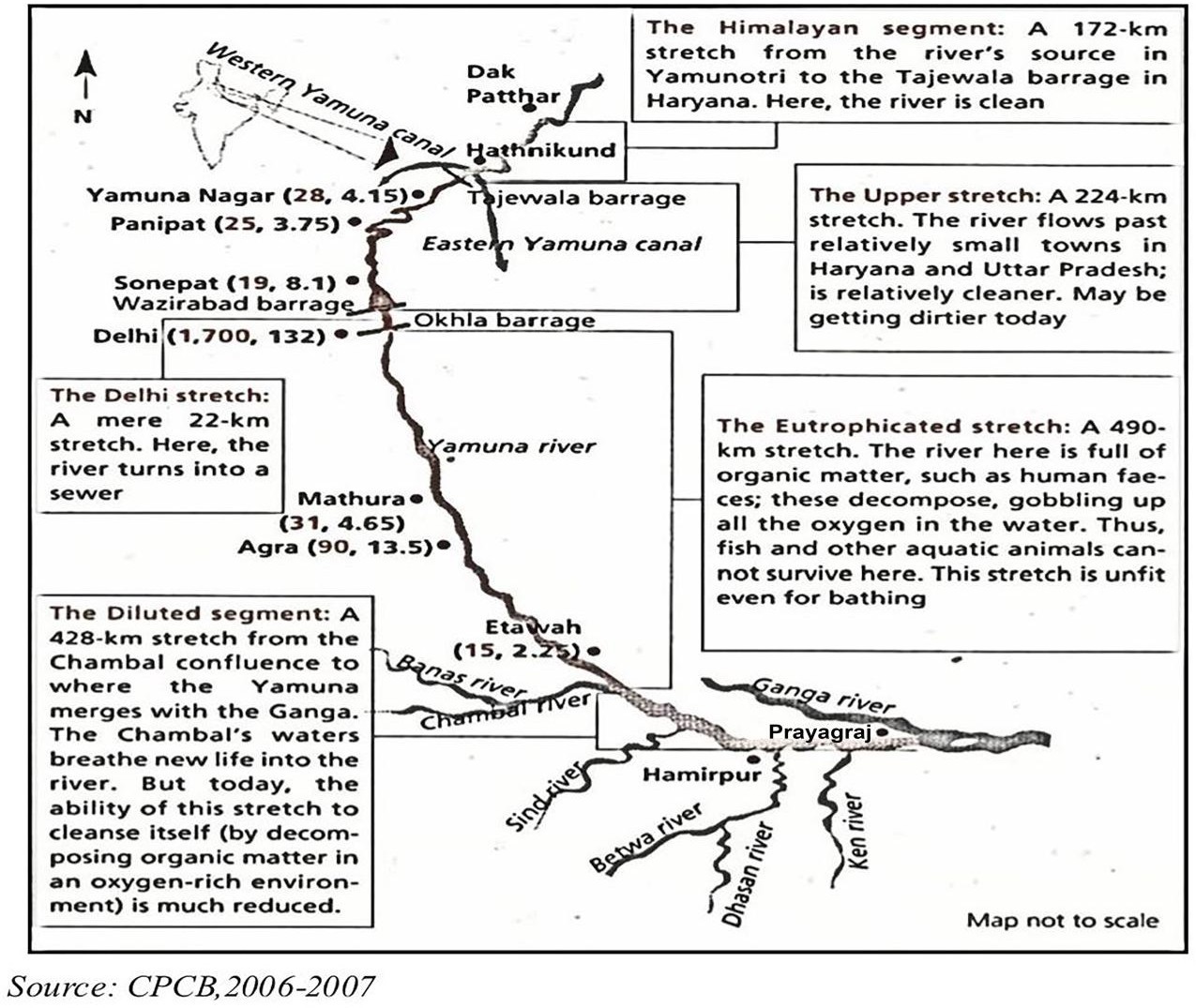
5.
Enlist various usages of the Yamuna River?
- The Yamuna River sustains all forms of life along its banks and various social and commercial activities depend on it.
- It is the major source of drinking water to millions of Indiansand has multiple other uses.
- The Yamuna Basin is of great economic significance due to its fertility and high productivity, particularly many parts of Uttar Pradesh and Haryana.
- Some well-designated uses of the water of the Yamuna River are as follows:
- Drinking water
- Bathing water
- Irrigation
- Livestock use
- Industrial use
- Navigation
- Aesthetics
- Recreation and
- Religious and Cultural
- The availability water of the Yamuna River varies greatly with time and space with 80% of the water flowing in it in the Monsoon period (July, August and September) whereas whatever water is available in it in the non-monsoon period (October to June) is widely used for irrigation and drinking, leaving very little water in the river to flow .
- Along its course, the water of Yamuna River is abstracted for a variety of purposes such as about 94% for irrigation, 4% for domestic use, and 2% for the industries.
- The river water is extensively abstracted at Hathnikund/Tajewala and Okhla barrages.
6.
What are the main sources of Yamuna Pollution?

- The Yamuna River is one of the most contaminated rivers of India.
- Untreated or partially treated domestic sewage, industrial effluents and agricultural effluents are the major contributors of pollution in the river.
- The cities alongside the Yamuna River release loads of contaminants in it.
- Due to its religious, cultural, social and economic significance the Yamuna River flows in the hearts of many Indians, but unfortunately like many other riverine systems of the country, it too is affected by the setbacks of industrialization, urbanization and rapid agricultural developments.
- Studies reported that due to industrialisation in the towns along the Yamuna River basin, all the industrial effluent finds its way into it.
- It has also been reported that the tributaries of the Yamuna River also transferred their pollution load into it.
- Water is consumed for different activities which generate a lot of wastewater causing deterioration of water quality of Yamuna River.
- Various point and nonpoint sources contribute to the contamination of the Yamuna River.
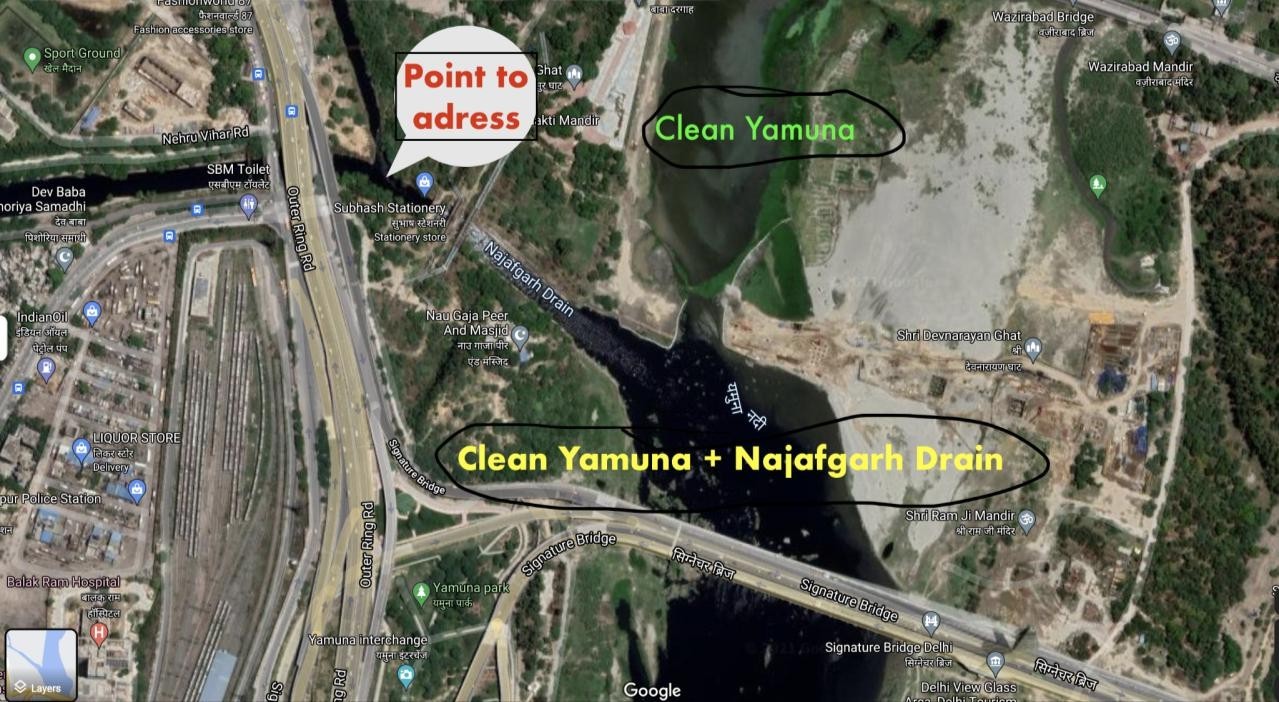
| Sources | Analysis |
|---|---|
| Point Sources |
|
| Untreated Sewage |
|
| Najafgarh drain |
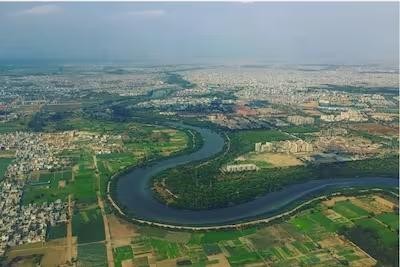
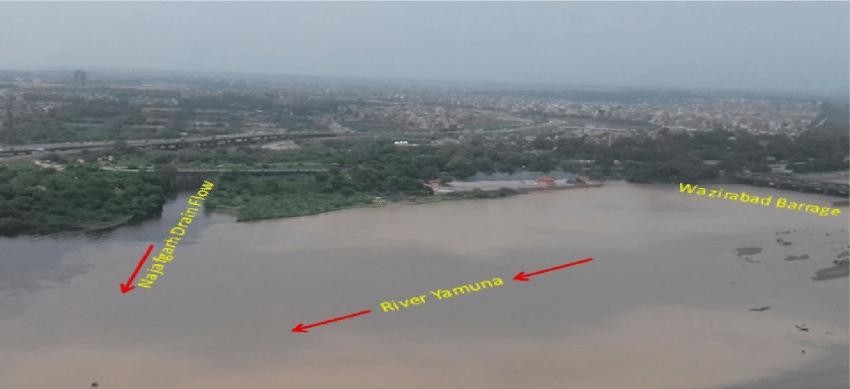 |
| Domestic pollution |
|
| Industrial pollution |
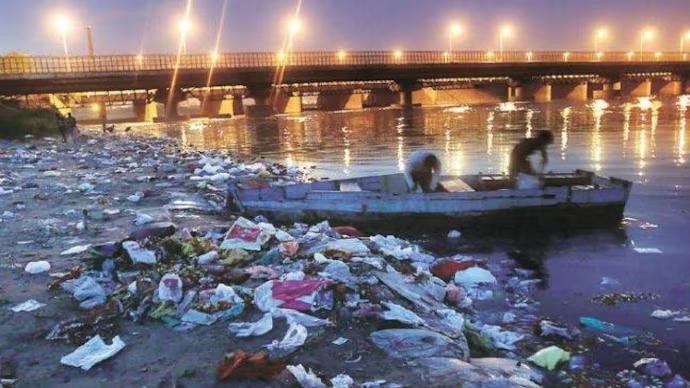 |
| Non Point Sources |
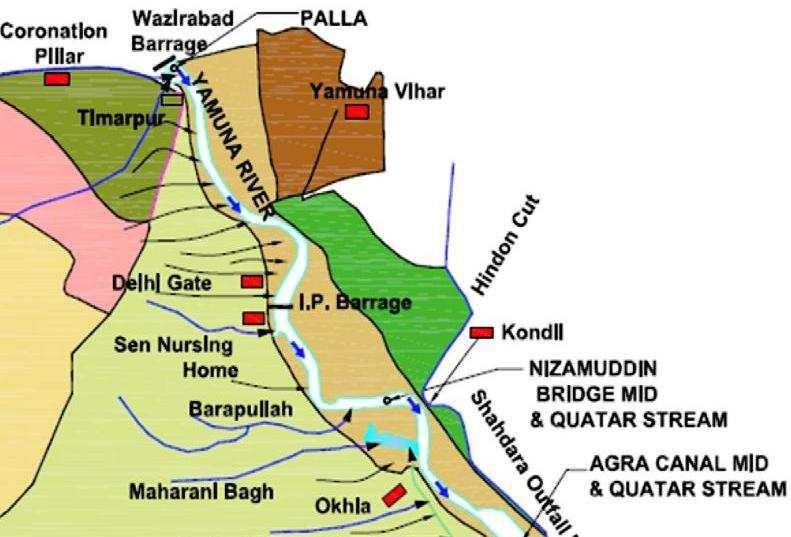 |
| Industrial heavy metal contamination |
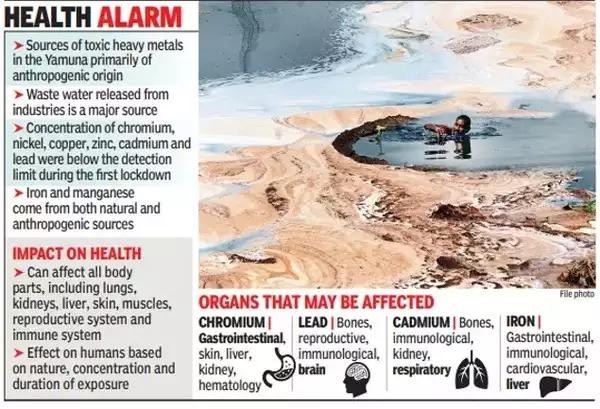
 |
| Idol Immersion leading to increased toxicity |
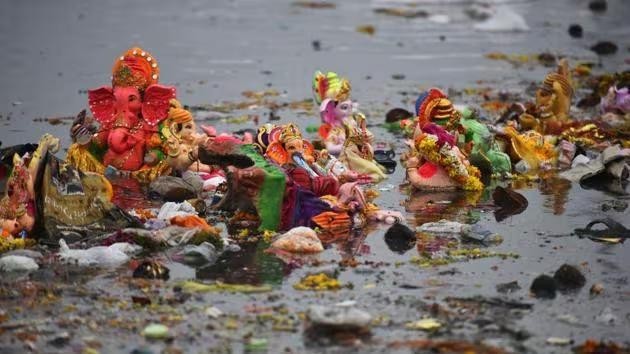
|
| Plastic Pollution |
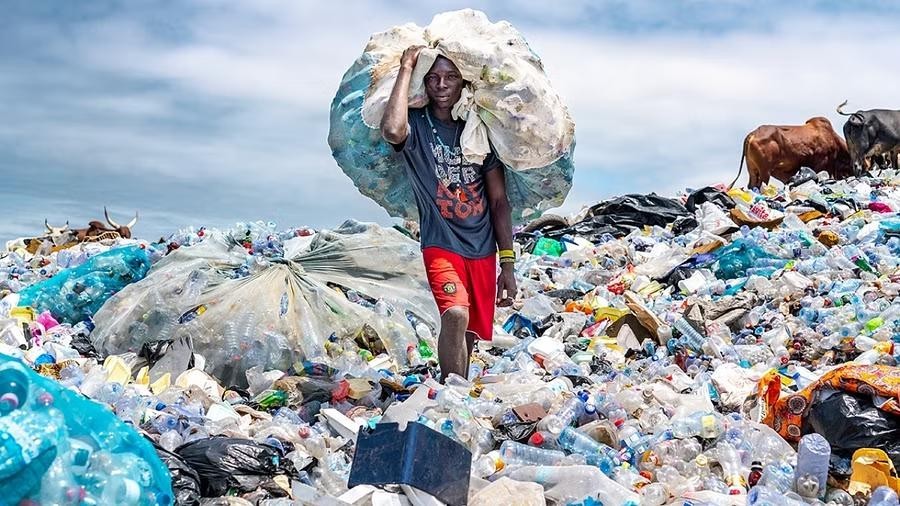 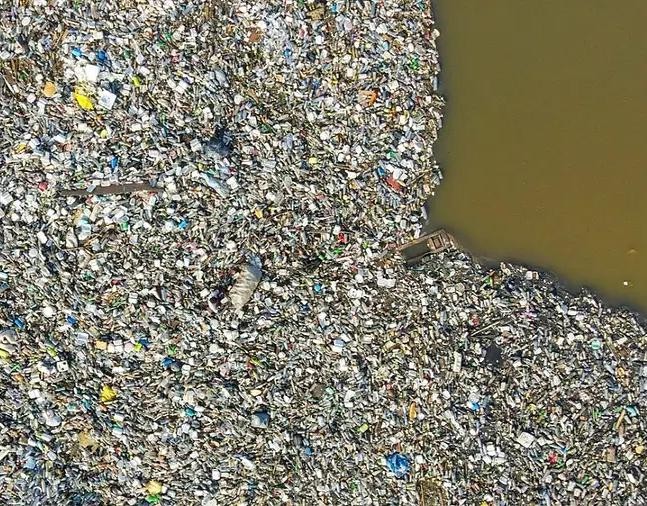 |
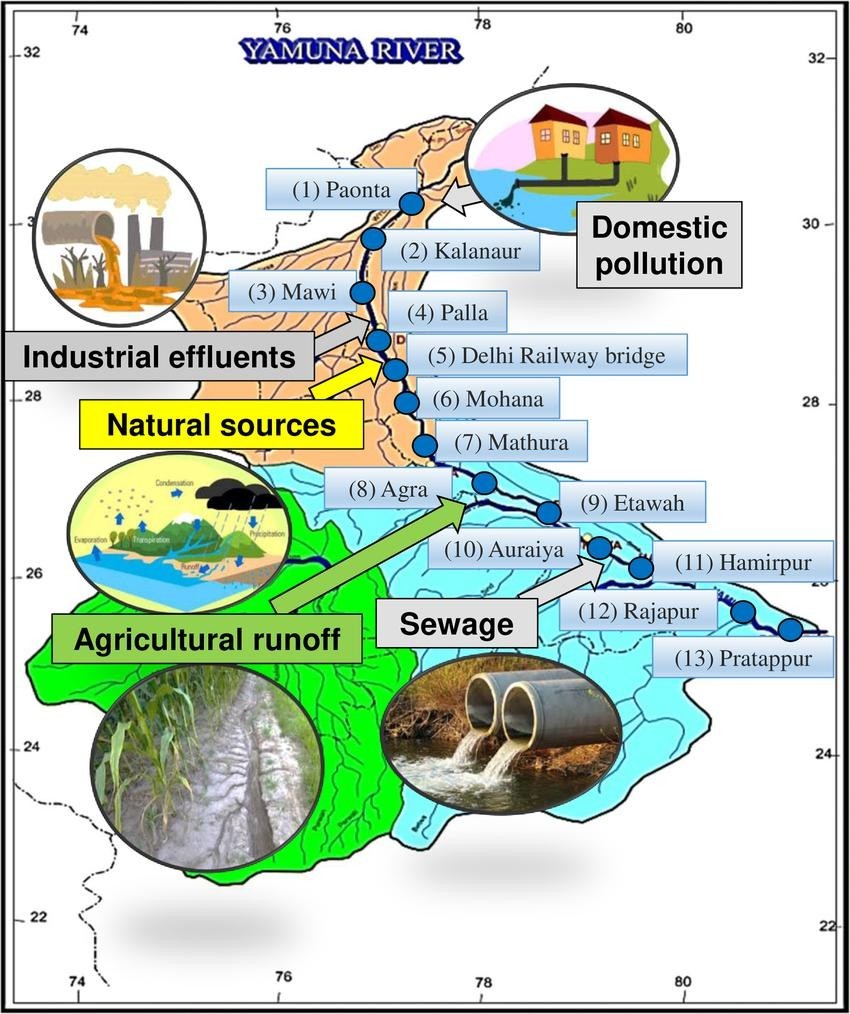
7.
Enlist some alarming facts about the rising level of pollution in Yamuna?
| Facts | Analysis |
|---|---|
| Dissolved oxygen (DO) |
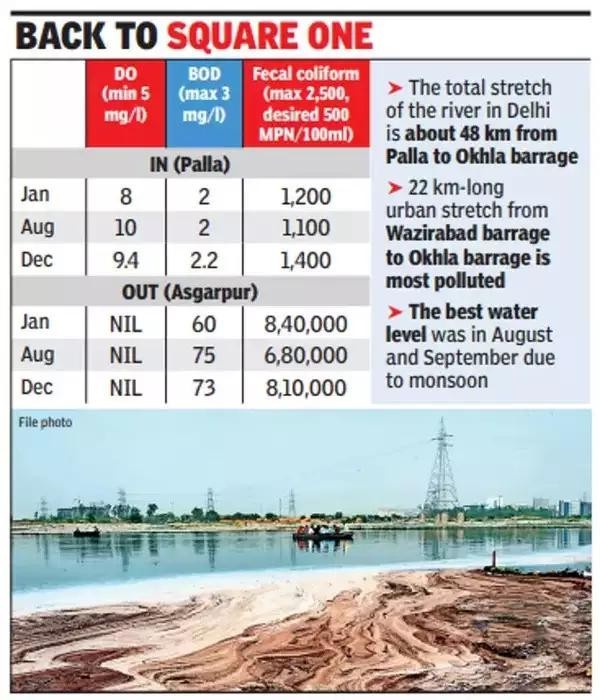
|
| Biological Oxygen Demand (BOD) |
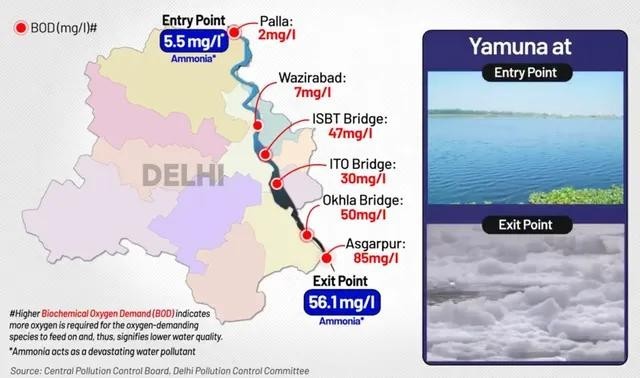
|
| Sewers |
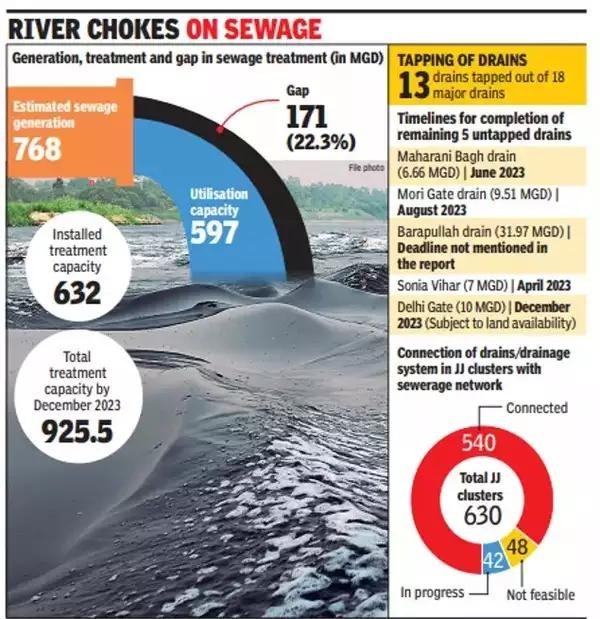 |
| Drains |
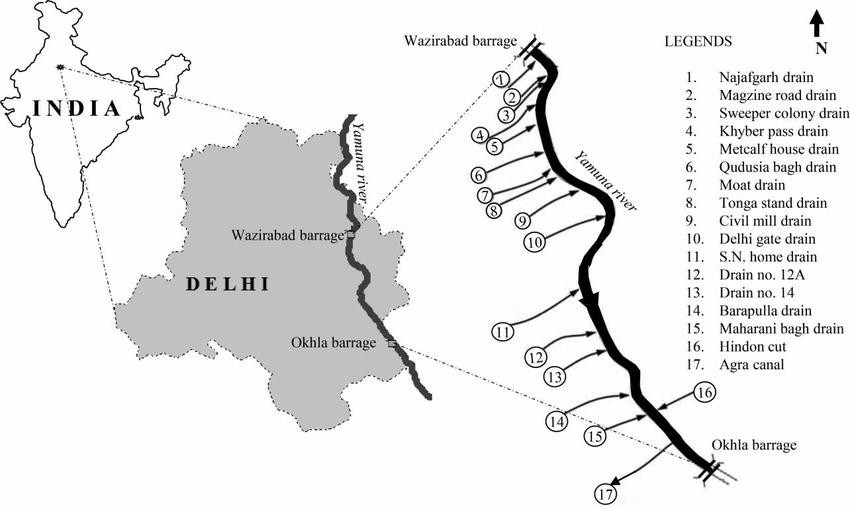 |
8.
Why is there froth in the Yamuna river?
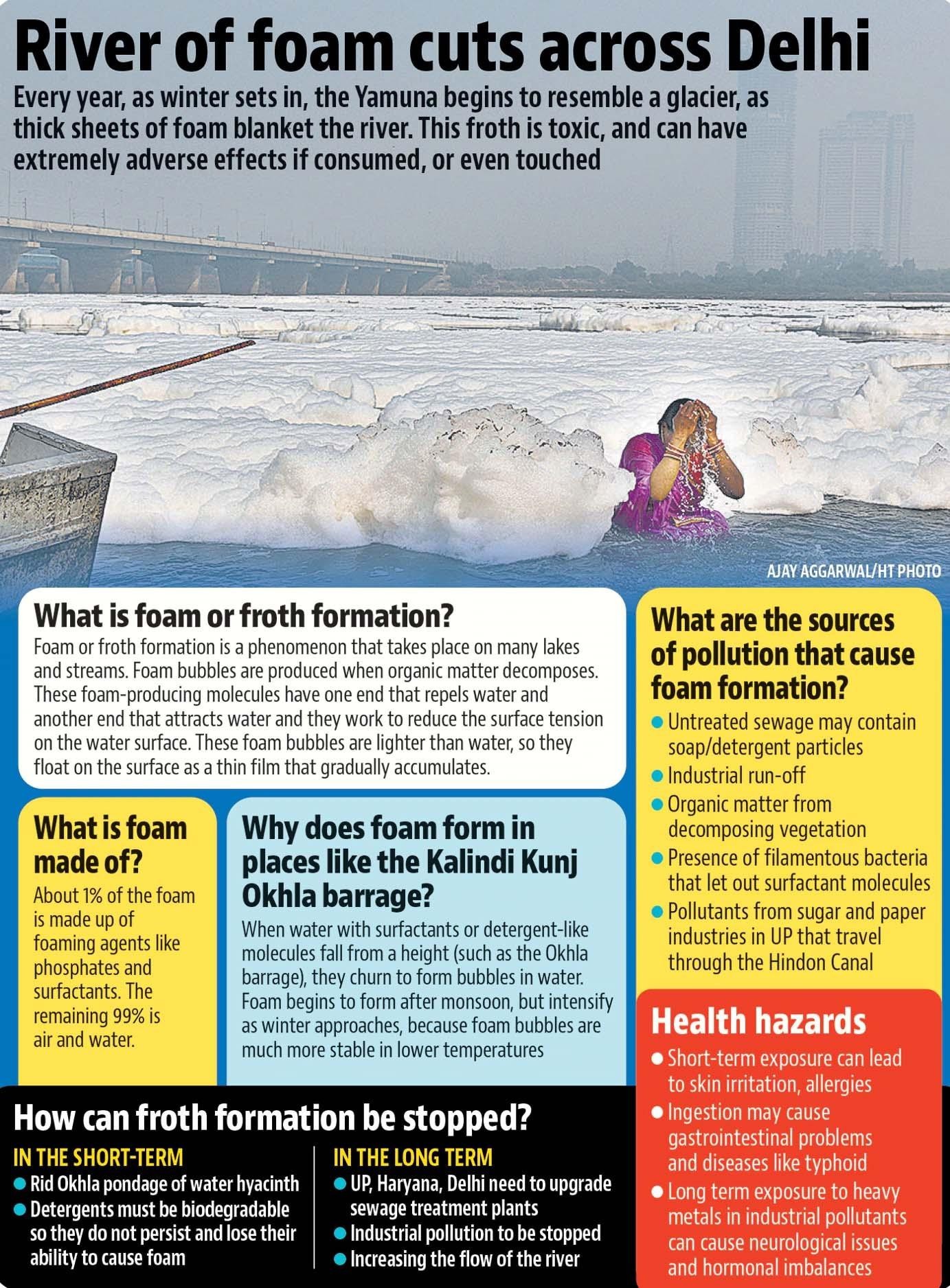
9.
What is the Yamuna Action Plan and enlist various phases of its implementation?

- It is one of the largest river restoration projects in India which is a bilateral project between the Government of India and Japan.
- It is being executed by the National River Conservation Directorate and the Ministry of Environment and Forests and the Government of India.
- The project is divided into 3 parts:
| Plans and Projects | Analysis |
|---|---|
| Yamuna Action Plan I (YAP I) – 1993 – 2002, |
|
| 2002 – 2003 (Extended Phase) |
|
| Yamuna Action Plan II (YAP II) – 2004 – 2011 |
|
| Yamuna Action Plan Phase III – 2018 onwards |
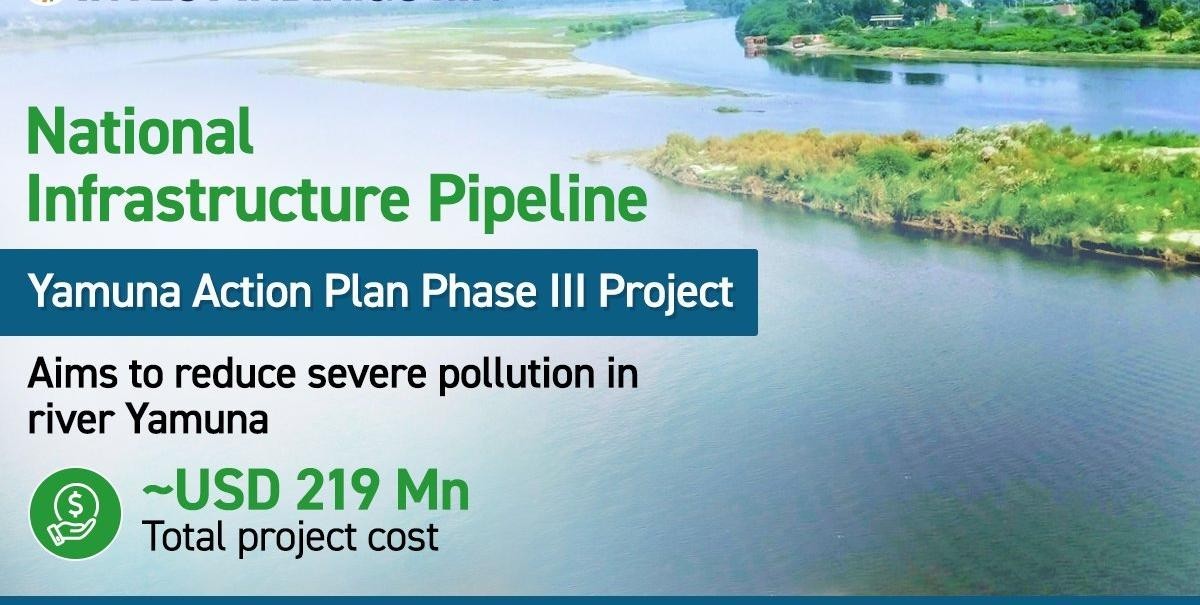 |
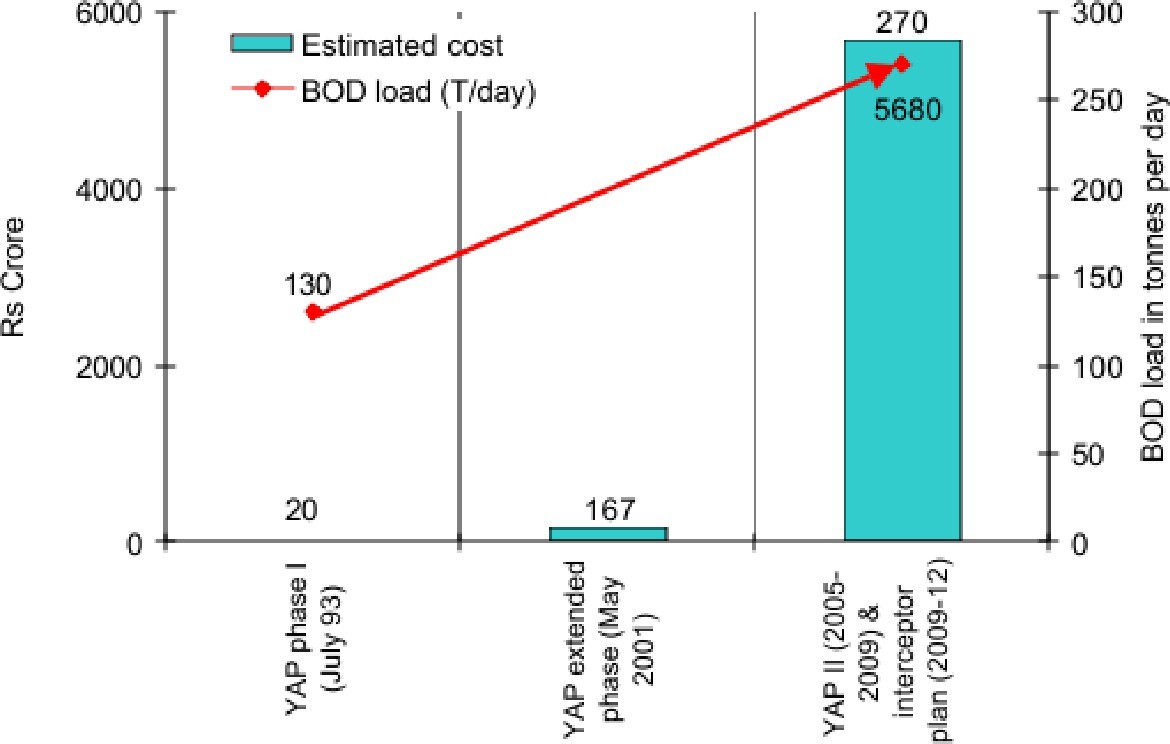
10.
What is Yamuna Purification Drive, 2018?
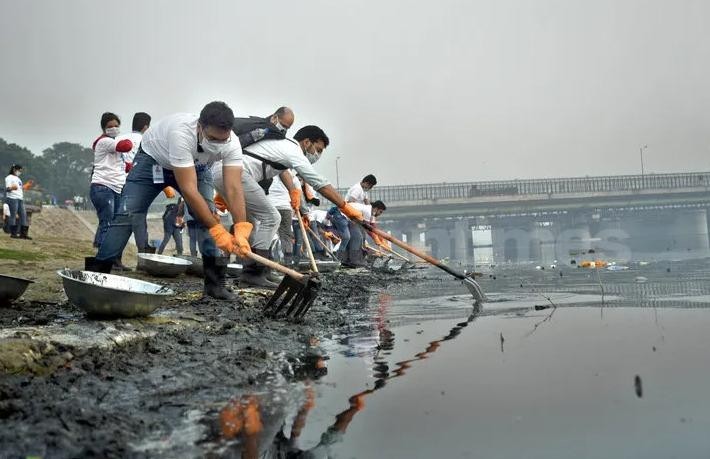
- Organized by the Public Health Department and covers 15 towns including Gurgaon, Faridabad, Yamuna Nagar, Karnal, Panipat, and Sonepat.
- Its objectives are to control the discharge of raw sewage into the river.
- Initiative that has been done are:
- Eleven treatment plants are being installed along the 83-kmlong sewer line.
- A treatment plant that can treat 30 million liters a day has been installed in Gurgaon which will help reduce the level of pollution from 200 mg a liter to 30 mg a liter, before it enters the Yamuna.
- A 5.8-km-long sewer line has been laid in the city to collect the polluted water at the treatment plant.
11.
Enlist various community initiatives wrt River Yamuna?
| Initiatives | Analysis |
|---|---|
| Yamuna Foundation for Blue Water Inc. |
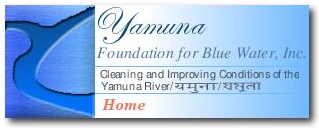
|
| ‘Maa Shri Yamuna Seva Samiti’ or Friends of Yamuna |
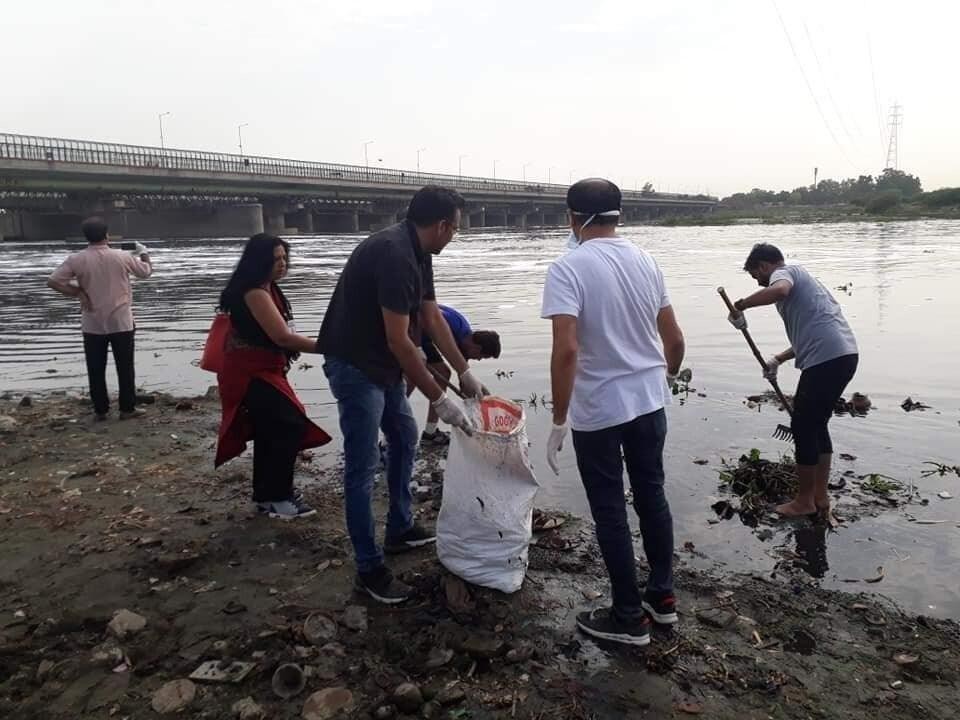 |
12.
Mention recent initiatives taken to clean Yamuna river?
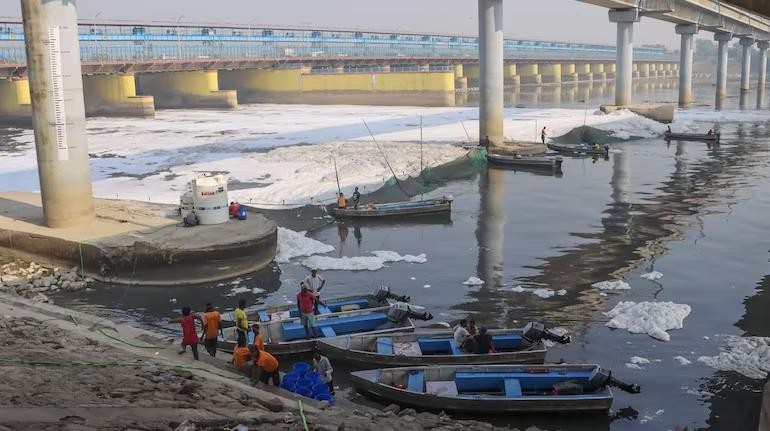
- The cleaning of the Yamuna River, a major issue during the Delhi Assembly elections, has officially commenced following the Bharatiya Janata Party’s (BJP) landslide victory.
- The Lieutenant Governor’s (LG) office confirmed the initiation of the project, which aims to restore the river’s health.
- According to the LG office, work on cleaning the Yamuna has already begun, with specialized machines such as trash skimmers, weed harvesters, and a dredge utility craft being deployed in the river.
- The ambitious project, which aims to clean the river within three years, will require coordinated efforts from multiple agencies, including the Delhi Jal Board (DJB), Irrigation & Flood Control Department (I&FC), Municipal Corporation of Delhi (MCD), Public Works Department (PWD), Delhi Development Authority (DDA), and the Environment Department.
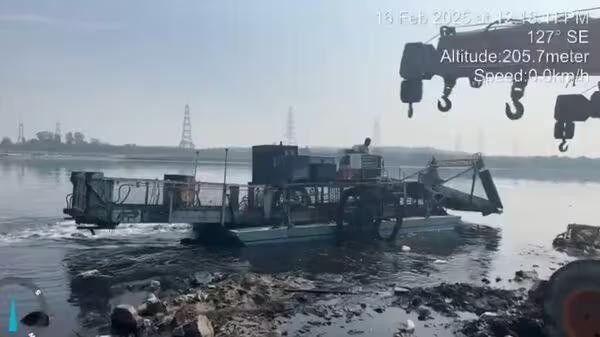
The LG office outlined a four-phase strategy to ensure the river is cleaned efficiently:
| Strategy | Analysis |
|---|---|
| 1. Removal of waste and silt from the riverbed |
|
| 2. Cleaning major drains |
|
| 3. Monitoring sewage treatment plants (STPs) |
|
| 4. Construction of new STPs |
|
13.
Mention about various river cleaning methods?
| Methods | Analysis |
|---|---|
| Proper Sewage Management |
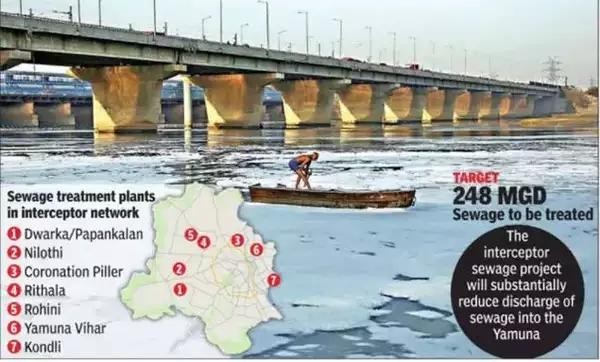 |
| Effective Solid Waste Management |
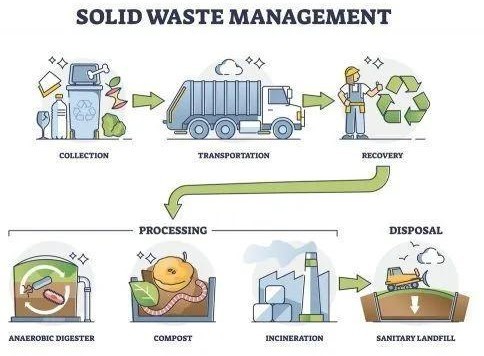 |
| Communitybased approach to address water related problems |
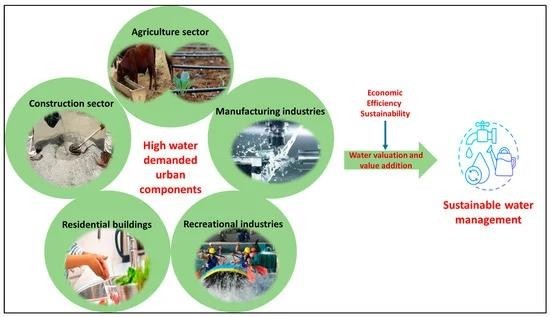 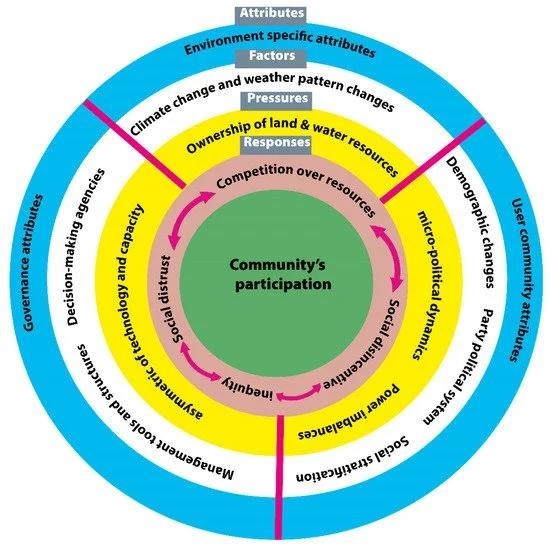 |
| Role of science and technology |
|
| Improved agricultural practices |
|
| Constructive Interactions |
|
14.
Mention a few river cleaning techniques?
| Techniques | Analysis |
|---|---|
| The Great Bubble Barrier |
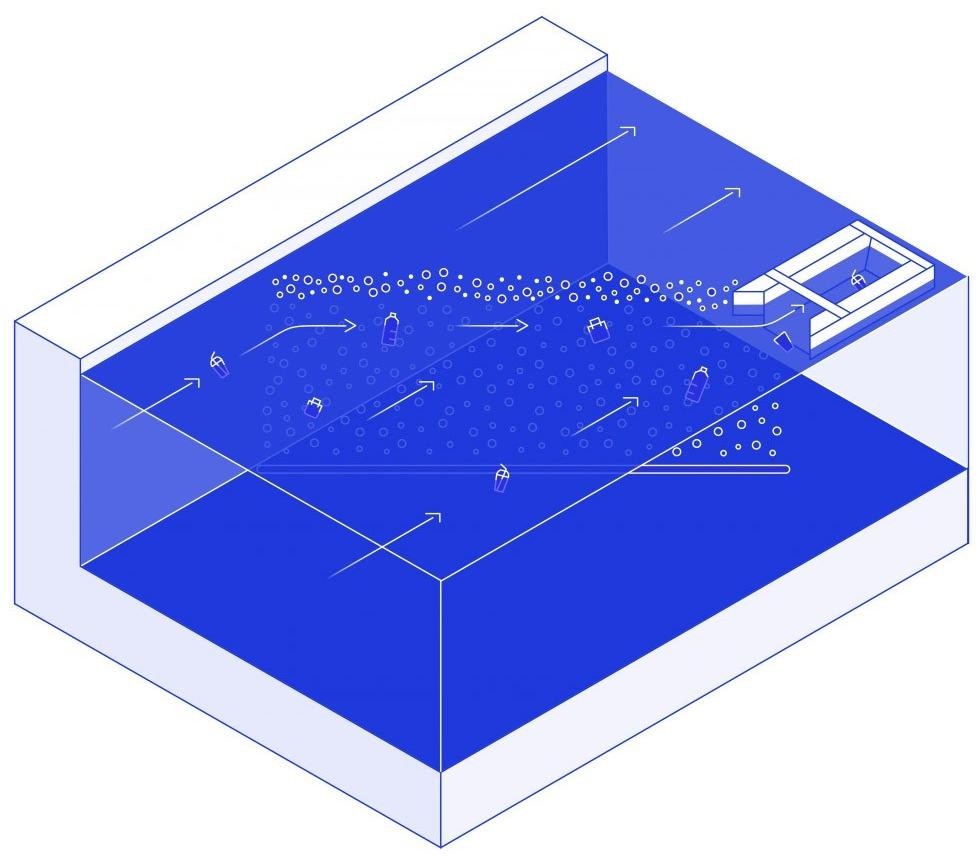 |
| Drainage nets |
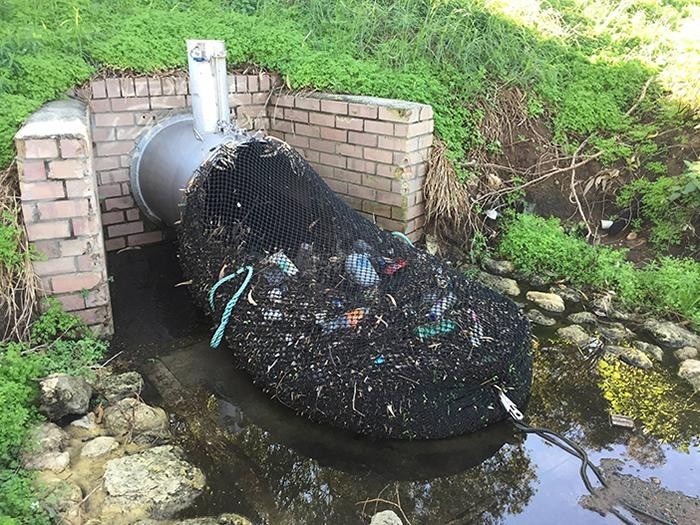 |
| The Canal Cleaner |
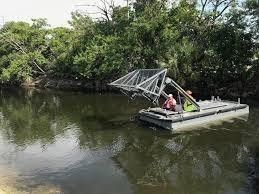
|
| Bolina Booms |
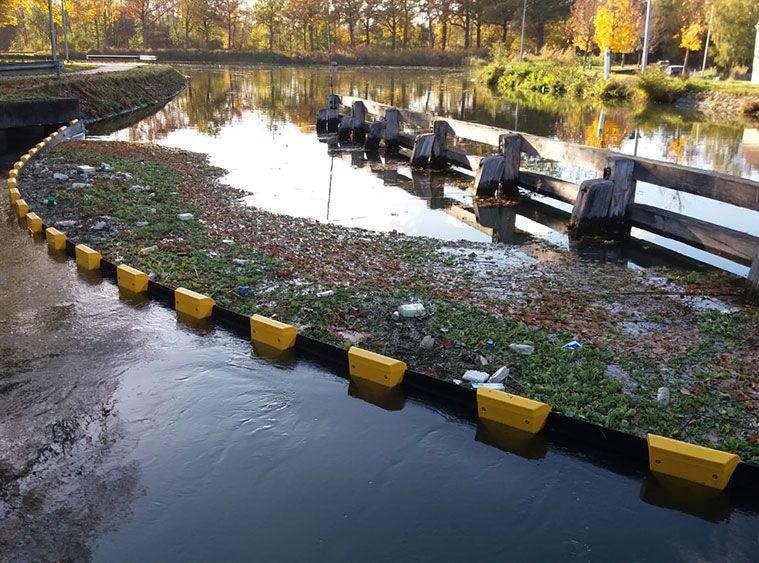 |
15.
How can civil engineering in India help in cleaning rivers?
- From creating efficient water management systems to designing sustainable infrastructure, civil engineers are helping to reduce the impact of water scarcity and ensure access to clean water for all.
- Civil engineers in India can play a crucial role in cleaning and restoring rivers like the Yamuna, Ganga through a variety of approaches and strategies:
| Aspects | Analysis |
|---|---|
| Infrastructure Development |
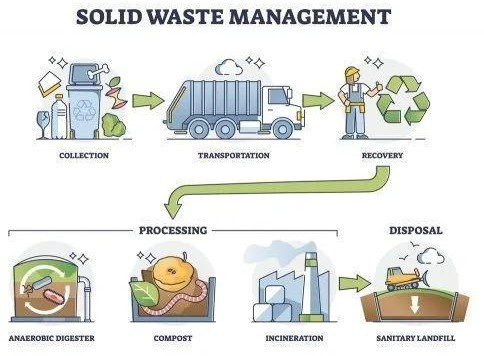
 |
| Riverbank Management |
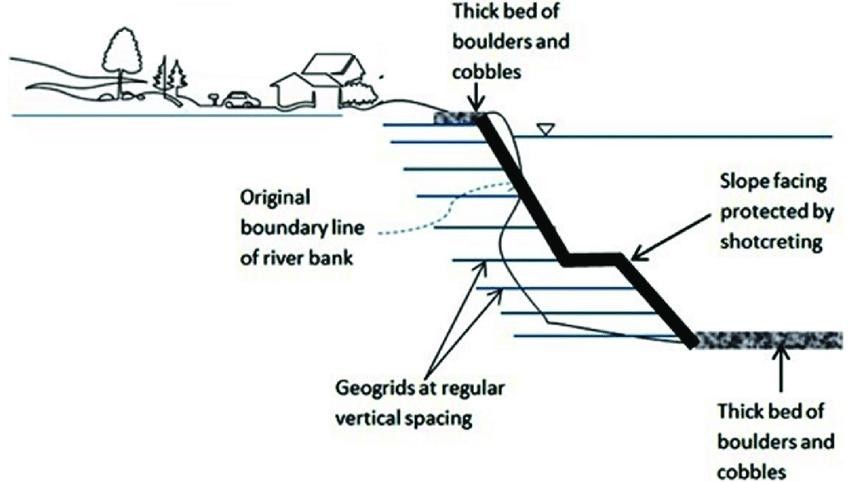
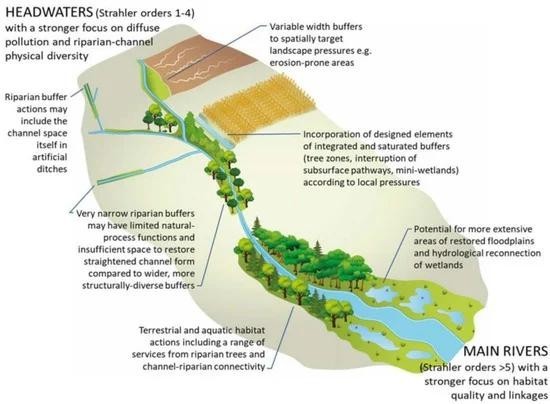 |
| Pollution Control Measures |
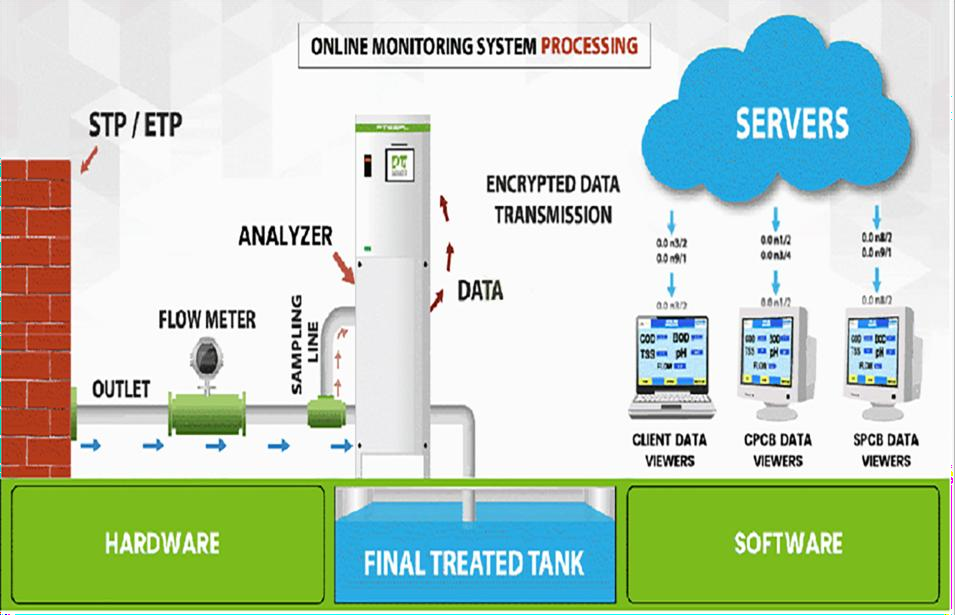 
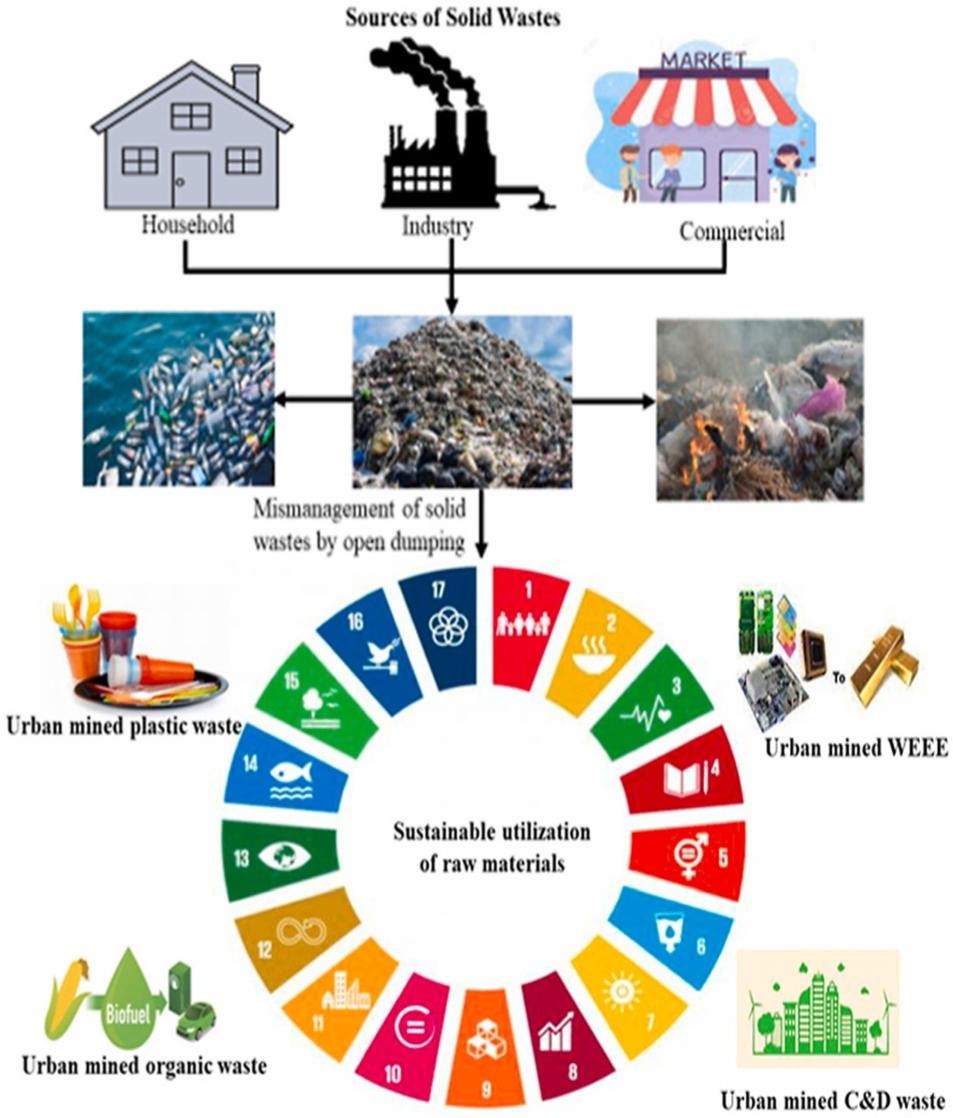 |
16.
Mentions various sustainable solutions wrt River Yamuna?
- Creating a project that balances the social, environmental, and economic interests of a community is important to achieve sustainability. When a project is planned in consideration of all these aspects, it will create a long-lasting program that benefits everyone.
| Levels | Solutions |
|---|---|
| What can be done at the administration level |
|
| What can be done at the Community Level |
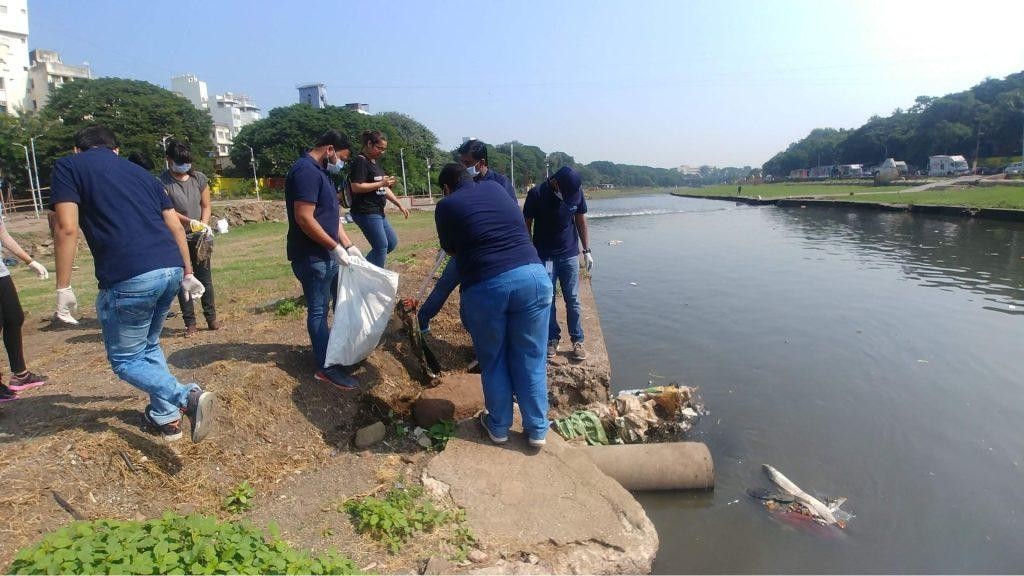
|
17.
What is the global status of river pollution?

18.
Enlist a few best practices?
Kham river restoration project:

- Rising in the Jatwada hills near the city, the 65-km Kham river flows through Aurangabad before it meets the Nathsagar water body near the Nadikathche Gaon.
- Leakage from sewage systems, indiscriminate encroachment and dumping of solid waste has reduced the once seasonal river into a perennial flow of garbage
- For years, the Kham River had been reduced to little more than a dirty, foul-smelling drain, a far cry from the lifeline it once was.
- Choked by pollution, plastic waste, and unchecked encroachments, the river was a stark reminder of what happens when urban expansion comes at the cost of nature.
- But where most saw an irreversible disaster, one man saw an opportunity for transformation.
- That man was 2011 batch IAS officer Astik Kumar Pandey who is now serving as Commissioner & CEO, ESIS, Mumbai, Maharashtra.
- With his leadership, the Kham River Restoration Project was launched, a project that would go on to become a model of sustainable development, community participation, and administrative willpower.
- The restoration project was divided into multiple phases, each targeting a critical issue plaguing the river.
| Phases of river restoration | Analysis |
|---|---|
| Phase 1: Cleaning the Riverbed |
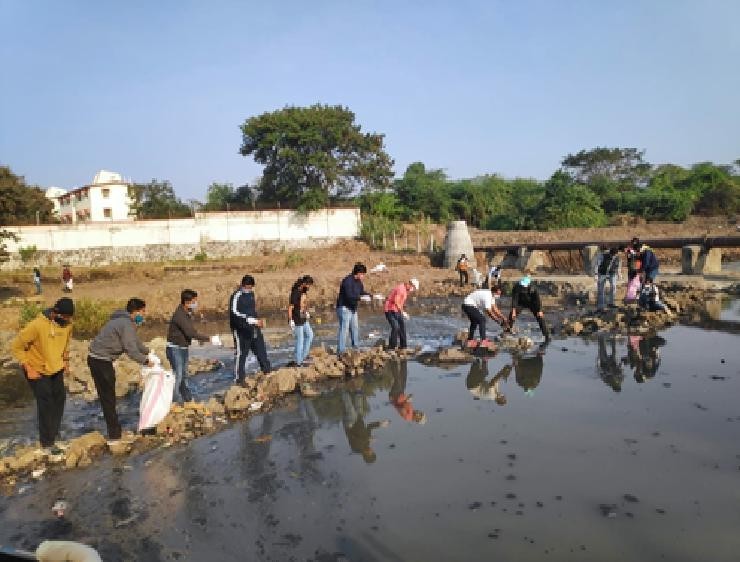
|
| Phase 2: Stopping the Pollutants entering the river |
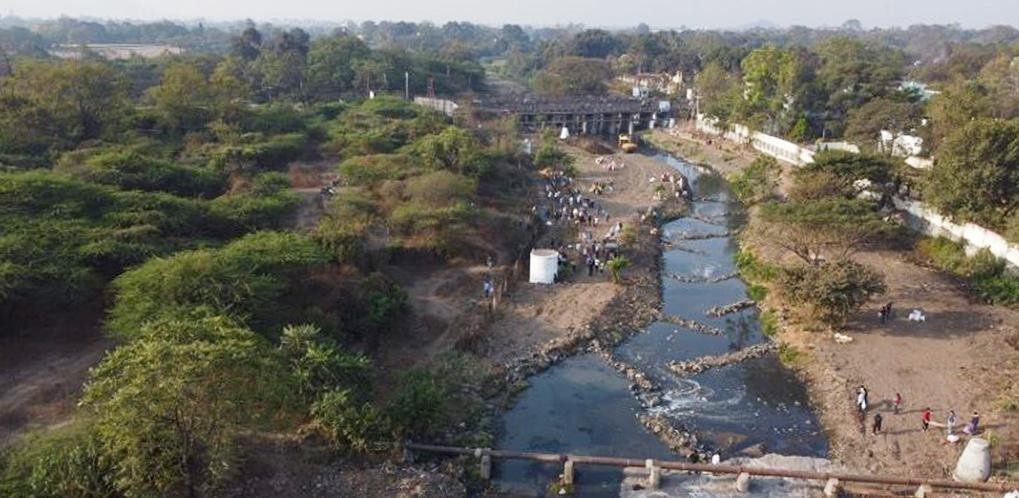
|
| Phase 3: Reviving the Ecosystem |
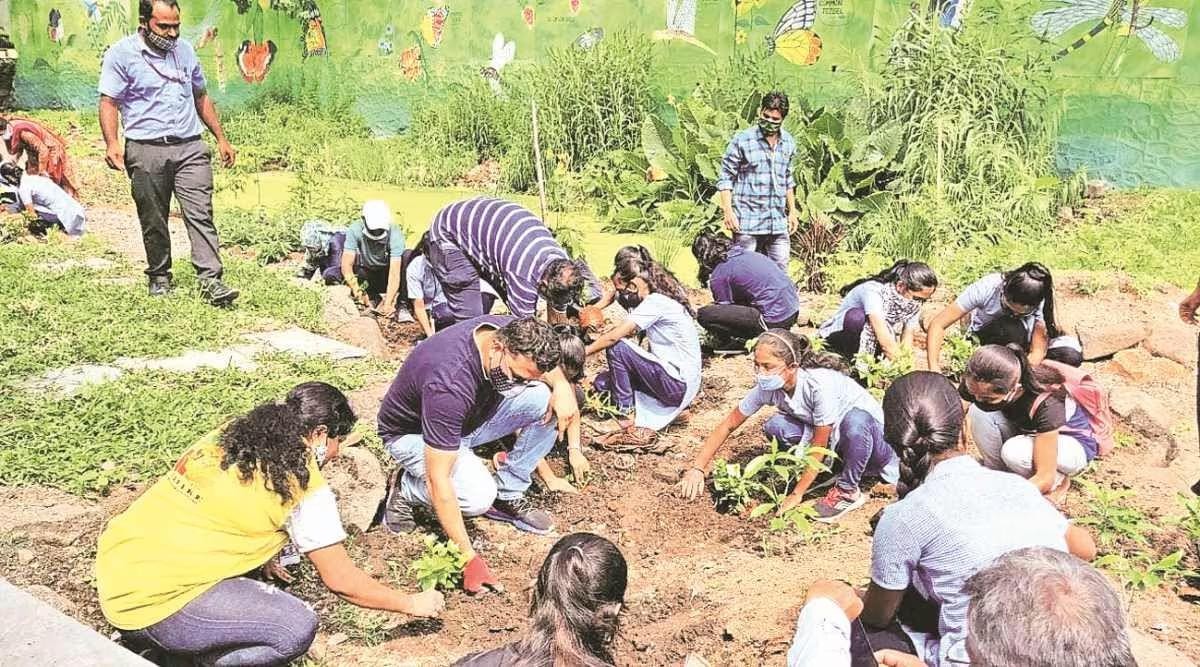
|

Transforming the Thames river:
- The River Thames, known alternatively in parts as the River Isis, is a river that flows through southern England including London.
- At 215 miles, it is the longest river entirely in England and the second-longest in the United Kingdom, after the River Severn.
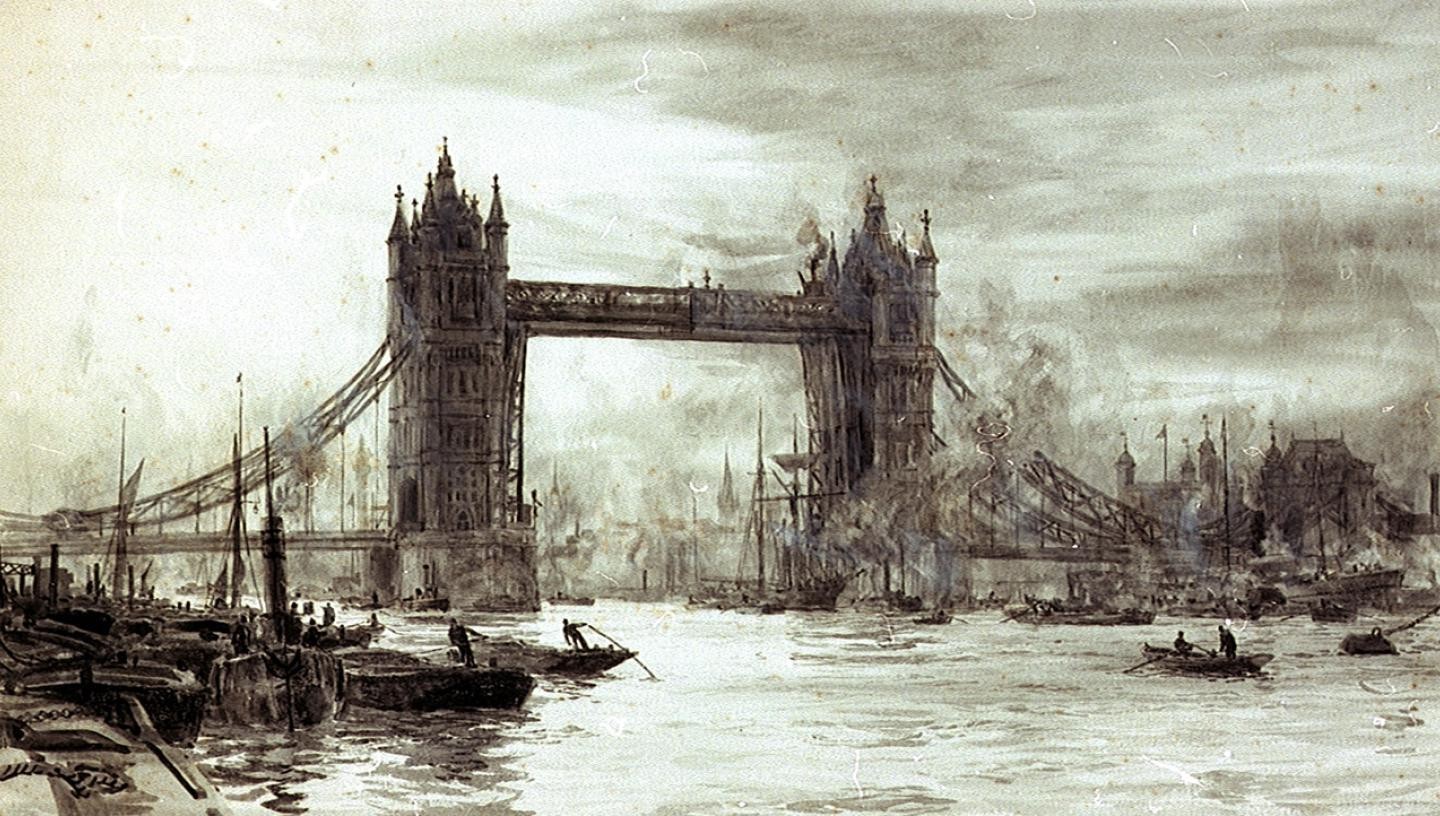
Sources of Pollution:
- Industrial Waste:
- Factories along the Thames discharged untreated waste directly into the river.
- Domestic Waste:
- Before the widespread adoption of sewage systems, household waste, including human sewage, often flowed directly into the Thames.
- Tributaries as Dumping Grounds:
- Smaller rivers and streams feeding into the Thames became dumping grounds for industrial and domestic waste.
- Sewage and Wastewater:
- With the expansion of London’s population and infrastructure, more sewage and wastewater were added to the Thames, worsening pollution.
- Population Growth:
- In the mid-1800s, London’s population surged to over 2.5 million, leading to an increase in waste production.
The Cleanup Process:
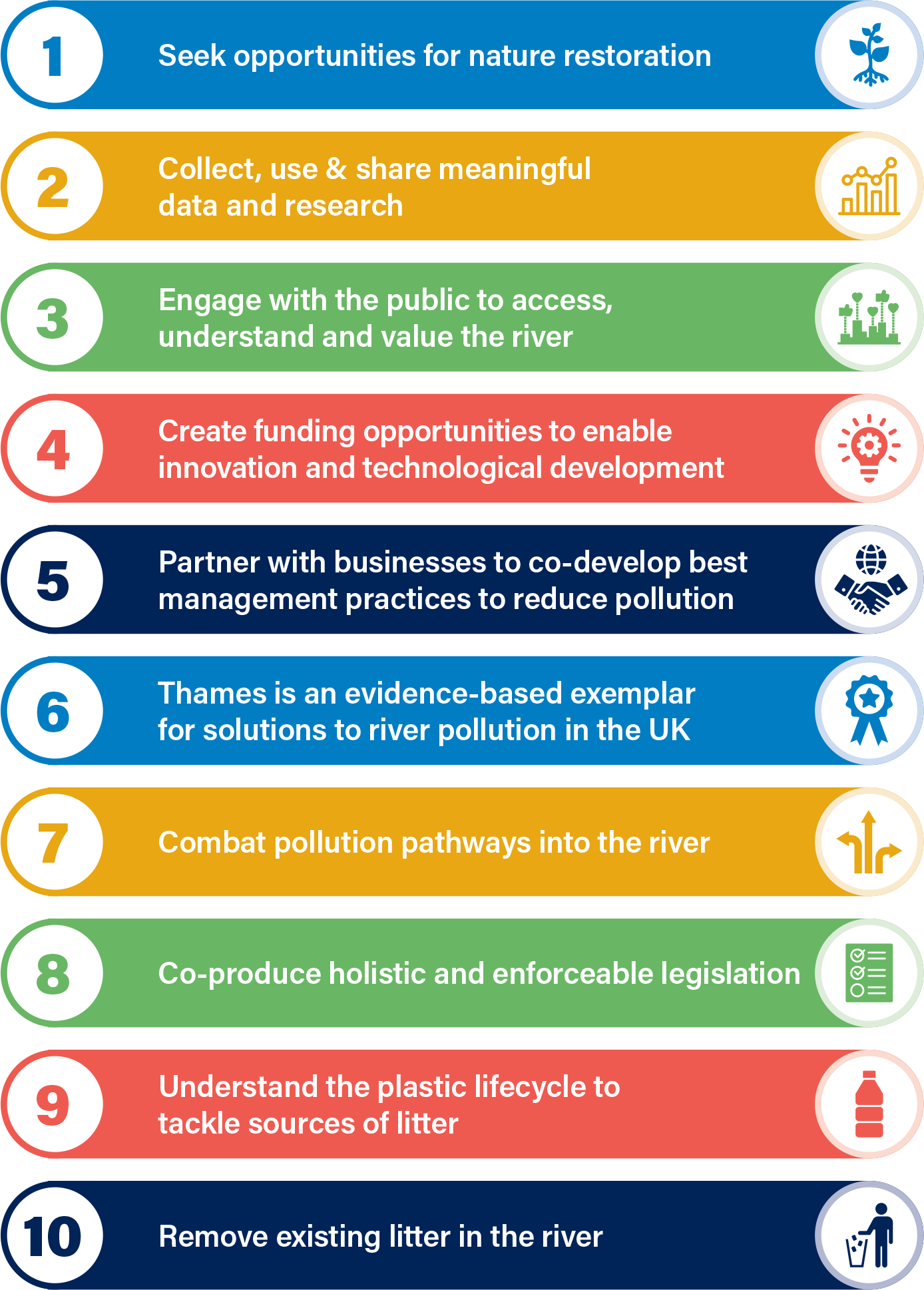
| Process | Analysis |
|---|---|
| Engineering Projects |
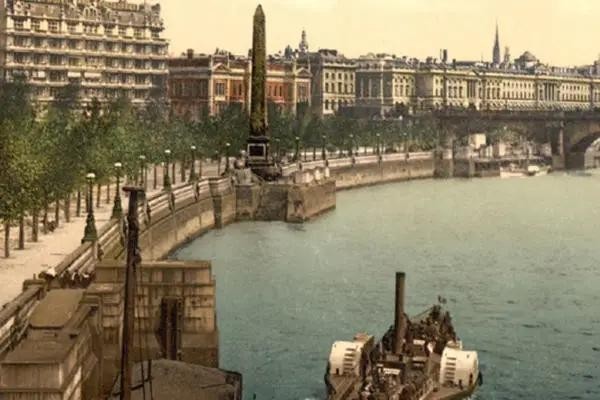
|
| Legislative Actions |
|
| Public Awareness Campaigns |
|
| Other Actions |
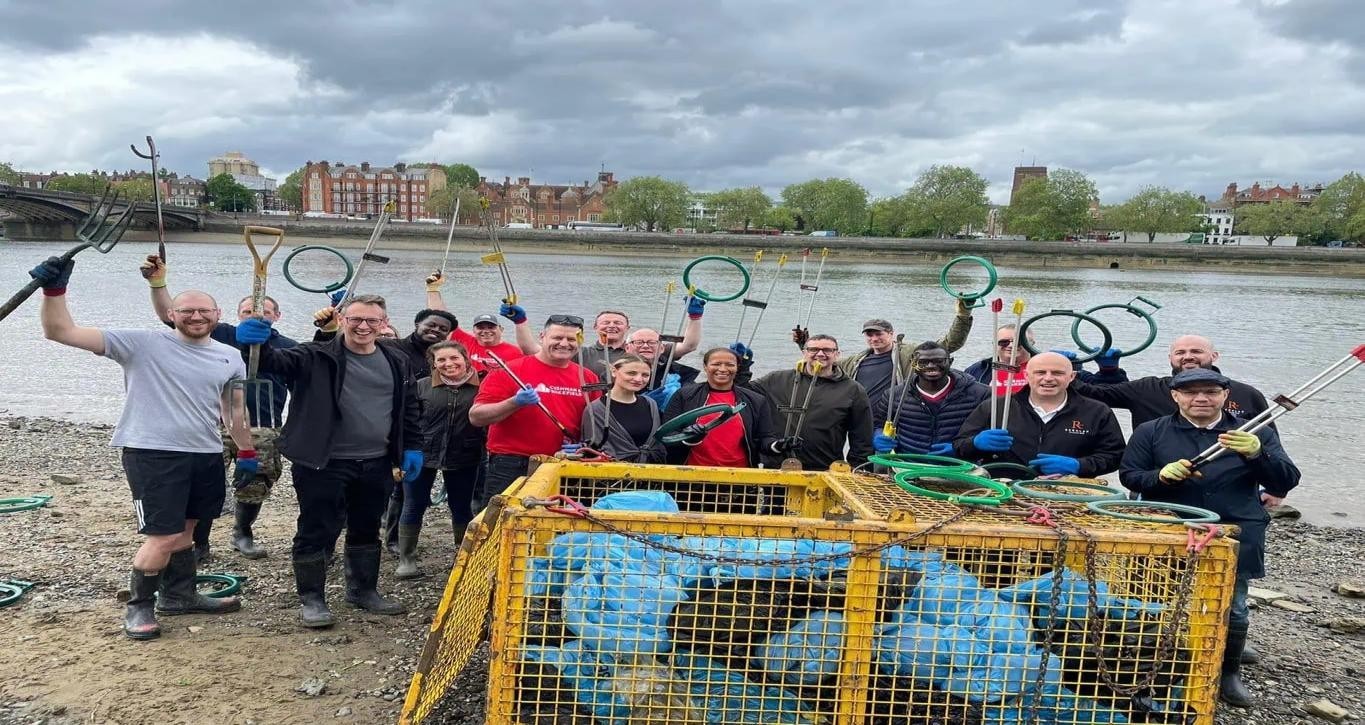
|
Current State of the Thames:
- Improved Water Quality:
- Through the combined efforts of engineering, legislation, and public action, the Thames' water quality has dramatically improved.

- Ecological Restoration:
- The Thames is now home to a wide range of wildlife, including salmon, fish, invertebrates, and various bird species, such as herons and cormorants.

- One of the Cleanest City Rivers:
- Today, the Thames is considered one of the cleanest city rivers globally.
What is the relevance of the topic for UPSC CSE?
For Prelims: Yamuna river and its tributaries, River pollution, Dissolved oxygen, BOD.
For Mains:Yamuna river pollution, Floods in Yamuna river.
Some Previous Years Prelims Questions
Q1. Which one of the following has been constituted under the Environment (Protection) Act, 1986?(2022)
(a) Central Water Commission
(b) Central Ground Water Board
(c) Central Ground Water Authority
(d) National Water Development Agency
Q2. Consider the following pairs: (2019)
| Glacier | River |
|---|---|
| 1. Bandarpunch |
Yamuna |
| 2. Bara Shigri |
Chenab |
| 3. Milam |
Mandakini |
| 4. Siachen |
Nubra |
| 5. Zemu |
Manas |
Which of the pairs given above are correctly matched?
(a) 1, 2 and 4 only
(b) 1, 3 and 4 only
(c) 2 and 5 only
(d) 3 and 5 only
Some Previous Years Mains Questions
Q1. Industrial pollution of river water is a significant environmental issue in India. Discuss the various mitigation measures to deal with this problem and also the government’s initiative in this regard.(10M-2024)
Some Questions from This Year and Previous Years Interview Transcripts
Preeti Sudan mam:
- Tell me something about River Yamuna.
Board Manoj Soni sir:
- If you are the commissioner in Delhi, what steps will you take to address Yamuna river pollution?
Some Questions for QUIZ
Q1. Consider the following rivers:
1. Giri
2. Tons
3. Sindh
4. Betwa
5. Ken
How many of the above are tributaries of Yamuna river?
(a) Only two
(b) Only three
(c) Only four
(d) All five
Some Questions for POLL
Q1. Do you think Yamuna can get clean in three years?
(a) YES
(b) NO
(c) Can’t say
Q2. Is Delhi responsible for the Yamuna river pollution?
(a) YES
(b) NO
(c) Can’t say